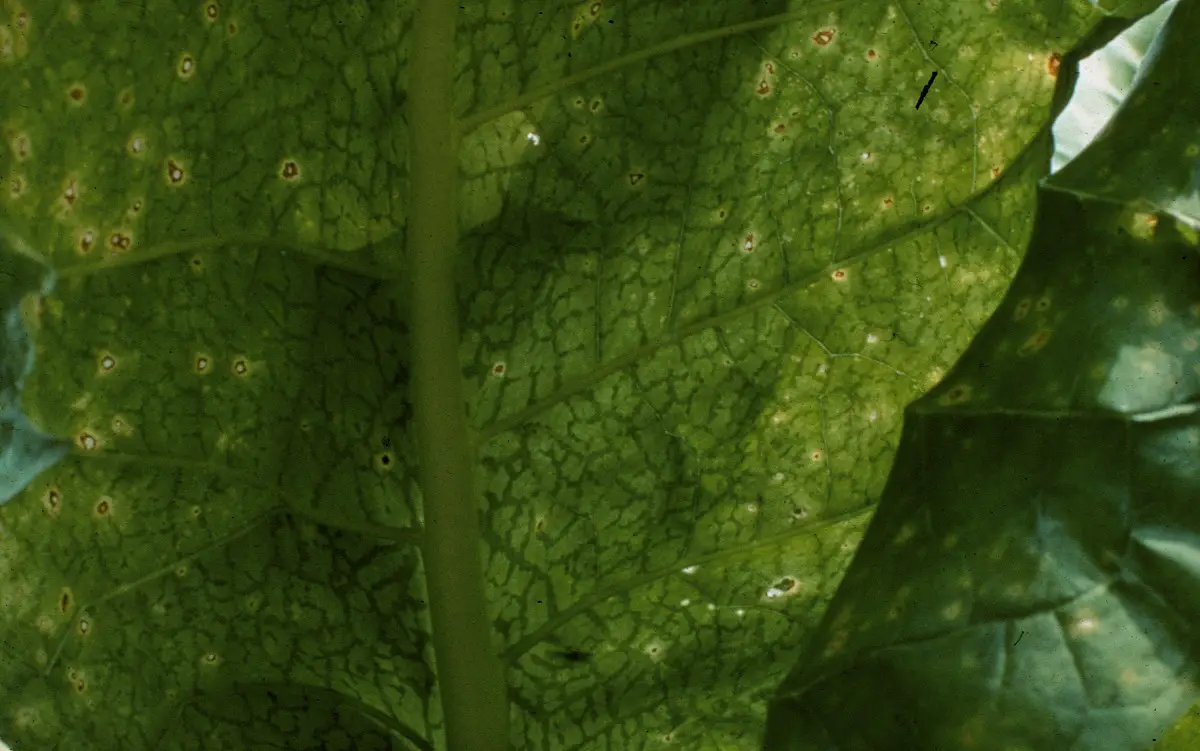

The tobacco mosaic virus is a viral disease that attacks tobacco plantsas well as in other solanaceous species, weakening them many although not to the point of killing them. This is evident when the leaves appear elongated, folded and wrinkled.
Characteristics of the tobacco mosaic virus


One of the transmitters of this virus is the aphid, but the contact between healthy plants with diseased ones, contaminated tools and the hand of man, have a good part of responsibility. The truth is when plants are infected there are usually great consequences of an economic nature for the owners of the plantations.
This virus affects onion, tomato, celery, potato, eggplant, beet, cabbage, soy, pepper and many more plants in the same way. The virus can only survive and reproduce in living cellsIt is quite efficient when it comes to infecting and has the ability to remain viable for a long time, even years in stored tobacco and crop remains.
Infestation occurs very easily using wounds or root hairs of the plant, people who handle the material and infected plants and even smokers, are one of the most effective ways to carry the tobacco mosaic virus to healthy plants. Once an infectious focus already exists, it will expand from one plant to another in various waysthat is to say, by the work of the workers of leaf removal or collection of cuttings, by means of the contact between roots and leaves.
Symptom
Symptoms and damage to the plant will depend largely on the age and level of susceptibility of the plantthe environmental conditions and the virus strain. Those plants that are sensitive to the virus as soon as they are infected begin to present symptoms such as mosaic-like spots or specks of varying intensity and loss of color on the tender leaves, all of which happens just 5 or 6 days after the arrival of the virus of the tobacco mosaic.
When the plant is sick due to this virus, it will be noticed in its small size and in the deformation of the leaveswhich will also be much smaller. When the infestation is quite advanced, the apical leaves will be the main damaged. You will also notice brown spots on the skin and on the pulp of the fruits, spots on the stems of dark color as well as on the petioles of the leaves.
In those hypersensitive varieties of the tobacco plantnecrotic tissues are observed in infected areas, which happens quickly. This is a way to prevent the virus from spreading to other areas of the plant.
How to control the appearance or spread of the tobacco mosaic virus?


It is vitally important to maintain good control of the plantation from the beginning to avoid the appearance or spread of the virus from diseased plants to healthy ones. Here are some tips for proper monitoring:
- Minimize the amount of nitrogen fertilization.
- Make the seedbeds in an area away from tobacco plantations.
- Plant seedlings that are not infected.
- Eradicate weeds.
- Keep your hands clean and disinfected before planting each position.
- Completely remove traces of crops.
- Use specimens that are resistant to the virus.
- Avoid animal access to the growing area as they can be carriers of the disease.
- Keep the plantation away from areas that are contaminated with aphids, whiteflies or others.
- Keep vectors at bay with natural or chemical insecticides.
- Keep work tools disinfected as a prevention in case they have been infected in other plantations.
- Avoid soils where there were previously contaminated plants, in case it is unavoidable you can renew the soil up to 30 centimeters down.
How is the tobacco mosaic virus transmitted?
The infection it is by contact in the vast majority of casesThis can happen either through the hands of the plantation workers that are infected by another plant or by the remains of a previous harvest. Also the tools that are used to work are responsible for carrying the virus from one place to another. Prevention is of vital importancesince once the tobacco mosaic virus has settled, there is no plant that can resist it or a way to eradicate it, when these are sensitive.
History of the tobacco mosaic virus


The tobacco mosaic virus was first described in 1883, by then the chemist Adolf mayer pointed out that it could be carried from one plant to another almost identically, as infections with bacteria did. Another investigation carried out by Martínez Willem Beijerinck six years later, revealed that even when using a culture area free of bacteria and well filtered, the viral agent remained alive.
Years later, specifically in 1935, it was determined that even when the virus was crystallized, he himself remained alivewhich was demonstrated at that time by Wendell M. Stanley as a biochemist. A crystallographer who worked for Stanley, named Rosalind Franklin, determined in 1958 that this tobacco mosaic virus was not solid, on the contrary, it was hollow, making known her hypothesis that its ribonucleic acid had a simple strand.
If you are thinking of growing tobacco plants or any of the ones we have mentioned, It is very important that you keep all this information in mind so that you take the necessary preventive actions in order to prevent your crop from being contaminated.
In fact, You may have noticed that only acting in advance in order to prevent any vector or external agentmisuse or lack of hygiene measures and disinfection of tools, you can take your plantation to a successful harvest whose fruits are healthy and can be processed or marketed as appropriate. As you can see, it is quite important to look at our plants, in order to know if they are being invaded by unknown pests or viruses.
